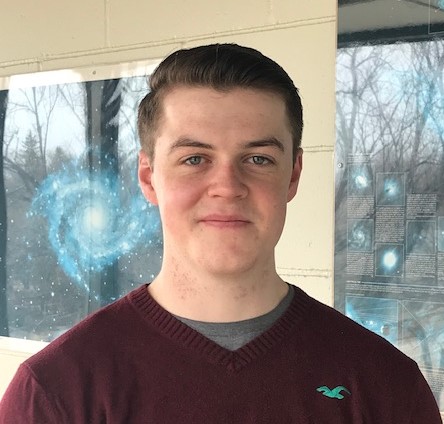
By
Todd D. Fugleberg and Jesse Elder
January 2024
Print Version
What you need to know
Gravitational waves are travelling waves of spacetime curvature that cause the space between motionless objects to be stretched and compressed (see Figure 1). Physicists have been interested in gravitational waves since they were first predicted by Einstein shortly after the publication of his general theory of relativity in 1915. They are very weak, however, and the first experimental evidence for gravitational waves did not arise until 1982. This led to Taylor and Hulse receiving a Nobel Prize for the discovery of a binary pulsar system, which provided indirect evidence of their existence. The first direct observation of gravitational waves in 2015 resulted in a resurgence of research in this area and much interest from the general public as well. Weiss, Barry and Thorne received the Nobel Prize in 2017 for their contributions to the development of the LIGO gravitational wave detector.
Why this research is important
The effect of gravitational waves detectable by the current generation of gravitational wave detectors is unbelievably small. They cause the 4 km long arms of the LIGO gravitational wave detectors to change their length by distance a millionth of the width of a proton. Even before the first direct detection, it was understood that it would be important to consider other effects of gravitational waves with which they could be detected and studied. One of the areas of research in this area concerns how the stretching and shrinking of space can affect other physical fields and lead to detectable particle production. Researchers previously used a simplified model of gravitational waves, ignoring the decrease in amplitude due to the spreading out of the gravitational waves in every direction. This research studied how the spatial dependence of the amplitude of the gravitational waves affects the specific predictions for the particle production they cause.
How this research was conducted
This research involved solving a differential equation that determined how the fields associated with physical particles moved in the spacetime background of the gravitational wave. We used a postulate for the solution to the equation with unspecified parameters extending upon the form of previous results. Using the powerful symbolic mathematics program Mathematica©, we substituted the postulated solution into the differential equation and obtained a system of algebraic equations for the unknown parameters. Mathematica© was then used to solve the system of equations for the parameters, ensuring that the postulated solution satisfied the differential equation. Finally, the solutions were used to calculate the particle current. The particle current was then used to calculate numerical predictions for the increase in the number of particles observed.
What the researchers found
The following results were consistent with the results of other researchers using the simplified gravitational wave model:
- The gravitational wave would cause an oscillation in the density of particles of about 1 part in 1,000,000 with a frequency twice that of the gravitational wave.
- It would cause a relative increase of about 1 part in 100,000 in the density of particles travelling along the direction of the gravitational wave.
The following results were new:
- Contrary to predictions of some previous publications, gravitational waves will not produce particles when travelling in a vacuum, but only through the interaction of a cosmic background field of particles.
- Our solution for the particle current along the direction of the gravitational wave has a different form than in previous research using the simplified model of gravitational waves. This new form of the solution exhibits a resonance effect that could further enhance particle production if a cosmic background field with a frequency twice that of the gravitational wave exists.
How this research can be used
To simplify our analysis, we considered a type of particle (massless & spinless) that does not exist in our present universe, as other previous researchers have done. This analysis can be extended to physical particles in our present universe, such as photons (light) and neutrinos. This research aims to develop our knowledge of new methods of analyzing the effects of gravitational waves to learn more about them and the theory of general relativity as a whole.
Acknowledgements
The authors acknowledge the Brandon University Research Committee, Brandon University/Brandon University Students Union Workstudy Program, and the Canada Summer Jobs Program for providing funding enabling Jesse Elder to work during the summer as a research assistant.
About the Researchers
Keywords
- gravitational waves
- particles
Publications Based on the Research
Elder, J., & Fugleberg, T. D. (2023). Series solution for interaction of scalar plane wave with spatially decaying gravitational wave. arXiv:2306.05394. https://doi.org/10.48550/arXiv.2306.05394
Fugleberg, T. D. (2023, June 18–23). Power series solution of massless Klein-Gordon equation in spatially dependent gravitational wave background [Conference presentation]. CAP Congress, University of New Brunswick, Frederickton, New Brunswick, Canada.
Editor: Christiane Ramsey
Read more BU Research
Research at Brandon University follows comprehensive policies designed to safeguard ethics, to ensure academic integrity, to protect human and animal welfare and to prevent conflicts of interest.


